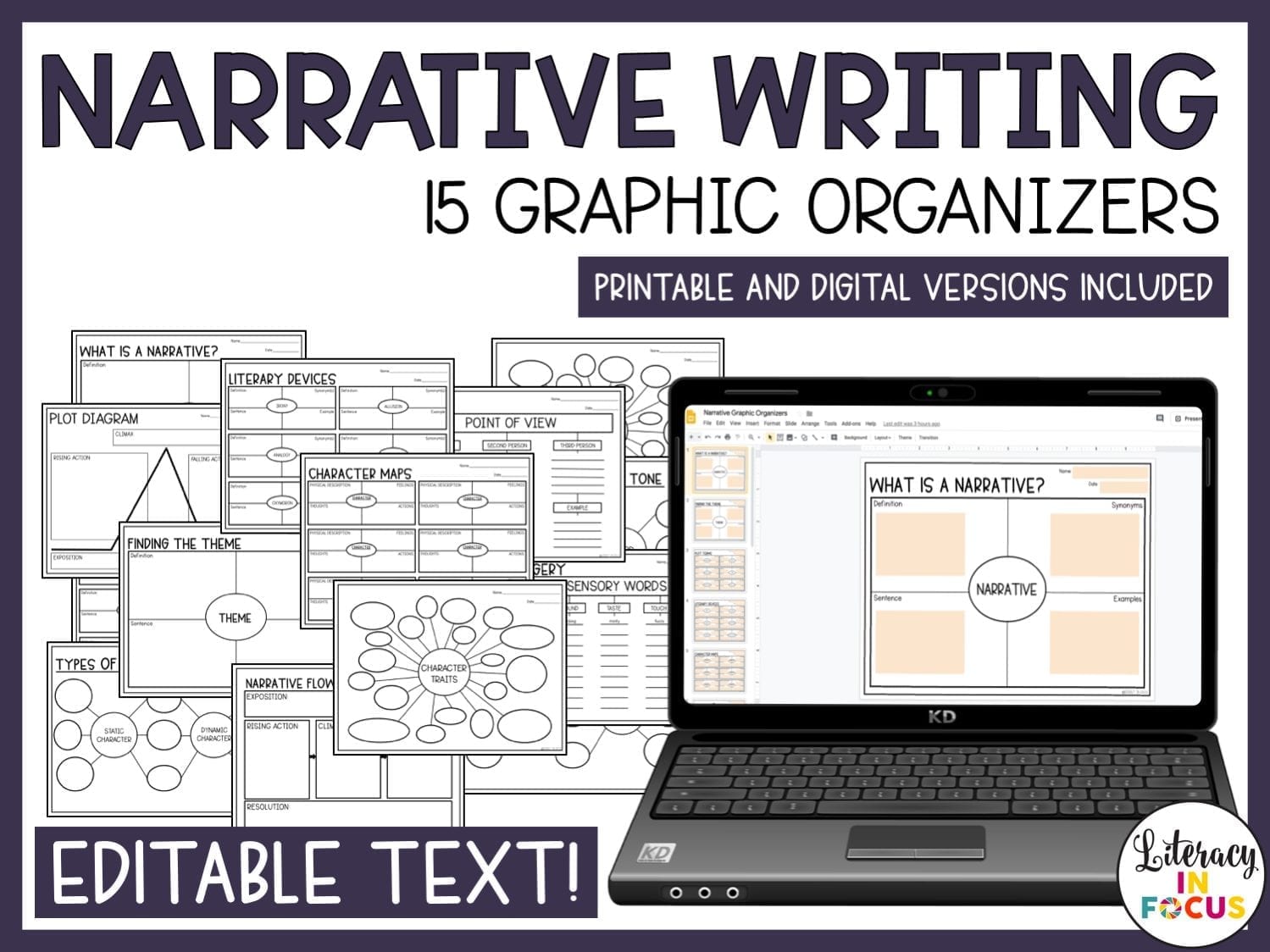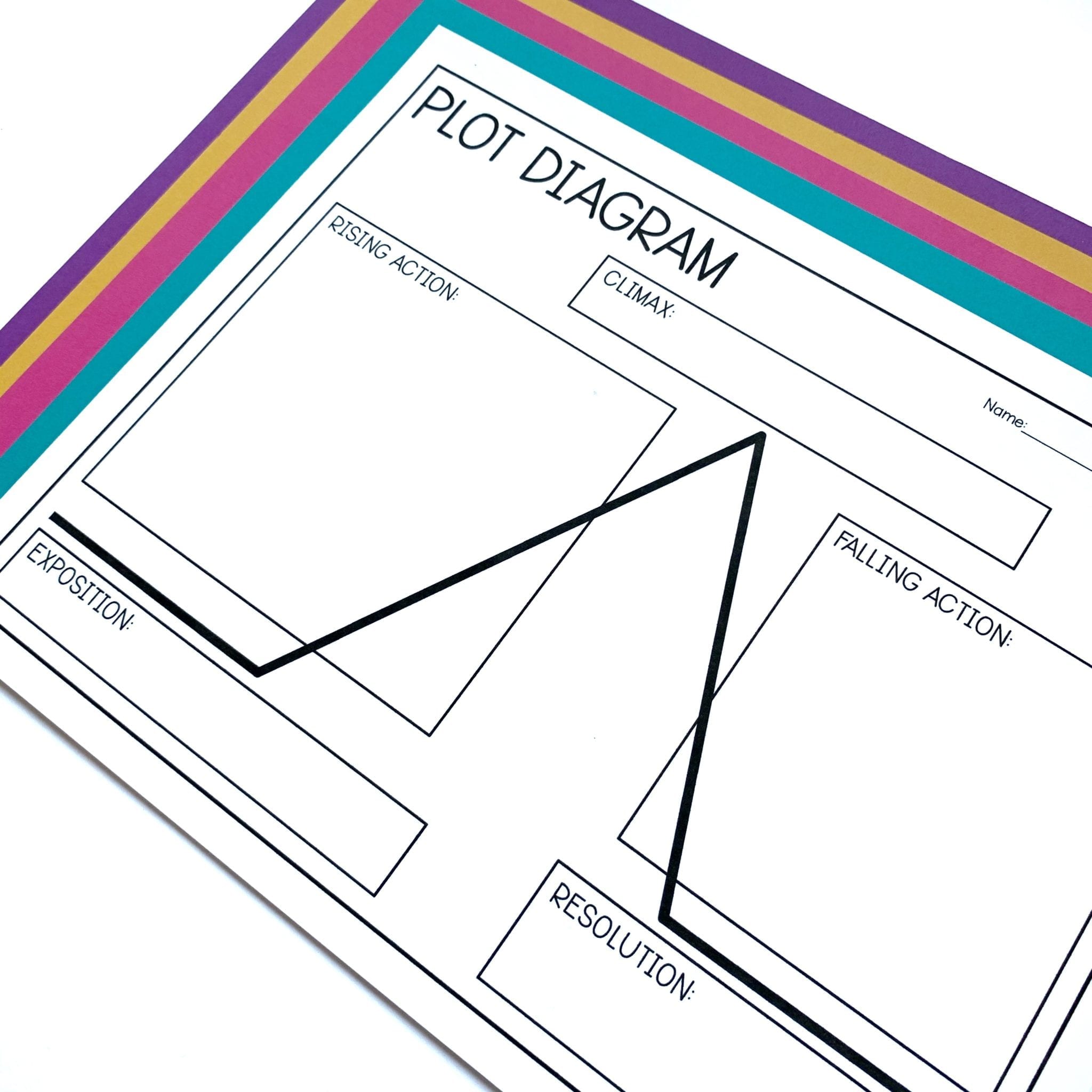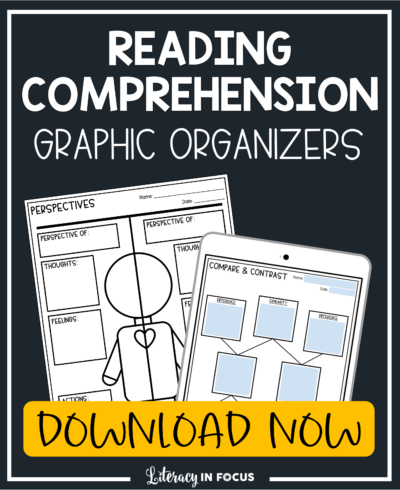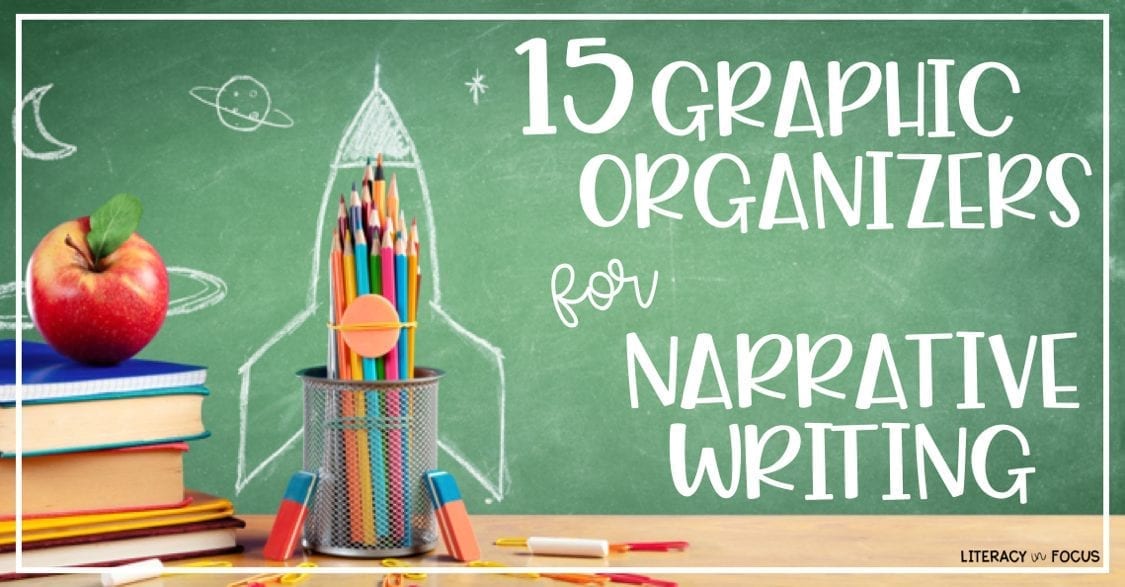
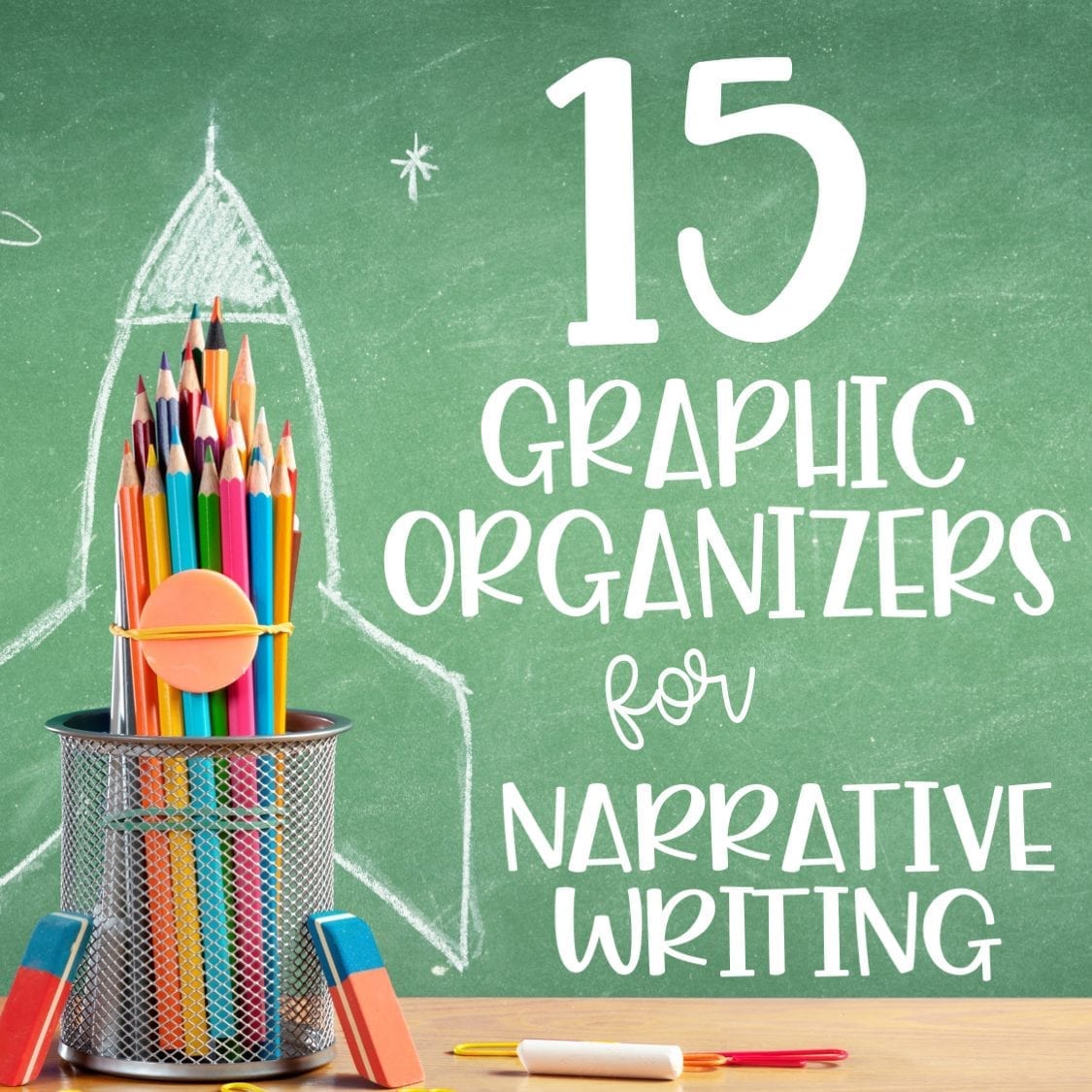
I think all teachers would agree that teaching writing is a grueling process. Narrative writing, in particular, is tough because it involves many different components. Whether students are writing a personal narrative or a fictional narrative, it is critical that they learn to correctly construct their writing in a way that highlights their storyline. Flowing through the elements of plot, character, and dialogue can quickly become overwhelming. In order to ease the feelings of overwhelm, I like to utilize graphic organizers throughout the entire writing process. That way, students get a visual representation for each component of their narrative. Each organizer and the specific order of implementation is detailed below.
Narrative Concept Map
It might be obvious, but starting the teaching process by defining the term “narrative” is critical. Of course, students know what stories are, but the word narrative might be new to them. The concept map provides a space to record the definition, add synonyms, construct an original sentence, and develop concrete examples. If done well, students will start the writing process with a strong understanding of the expectations for narrative writing.
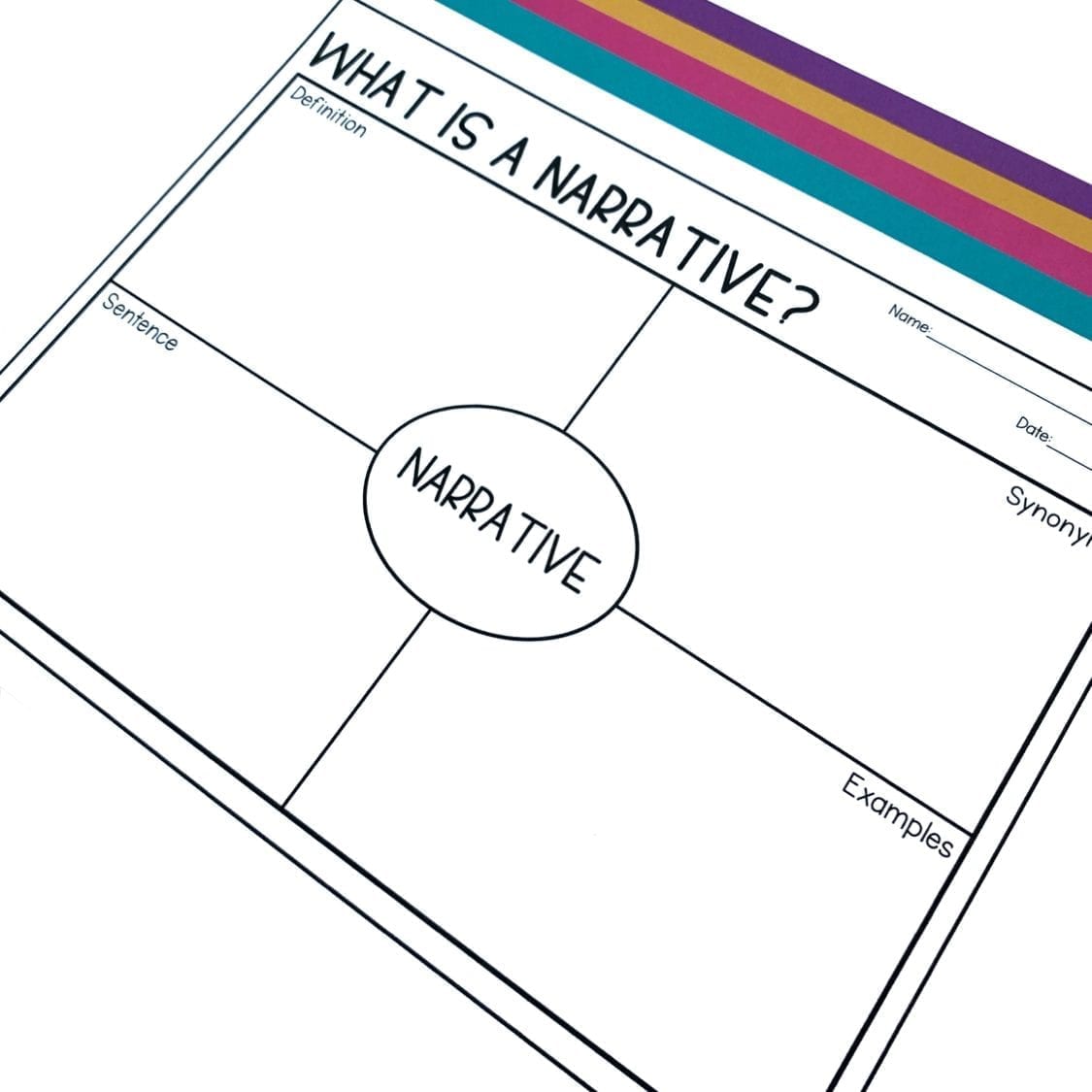
Theme Concept Map
The next graphic organizer is focused on the concept of theme. In order for students to start thinking about possible themes ahead of time, I like to complete it with students before they start writing. If students are clear on their theme, their stories tend to have more depth and meaning. The theme organizer is similar to the narrative organizer outlined above. Students write the definition, provide a synonym or two, write an original sentence, then generate theme examples from familiar stories they have read in the past.
Plot Terms Concept Map
It is hard to write a narrative without a basic understanding of plot. The ability to differentiate and understand the elements of plot is necessary for crafting an effective story. Using a concept map to define each term will help students when it comes time to construct each part of their story. Each element of the plot serves a specific purpose, which will hopefully be clear to students after they have completed the concept map for each term.
Literary Devices Concept Map
I like to spend a bit more time teaching students about the different literary devices they might want to include in their narratives. Typically, I focus on one device at a time, possibly even creating a separate lesson plan for each one. The graphic organizer is nice because students can refer back to it when writing their narratives. I like to require students to use three examples of literary devices in their story, which makes this graphic organizer a great point of reference later on in the writing process.
Character Traits Bubble Map
Brainstorming character traits is always fun because it gives students a chance to think about their favorite fictional characters and the specific traits those characters possess. Filling up the bubble map also gives students a great deal of inspiration to work with when it’s time for them to start constructing characters of their own.
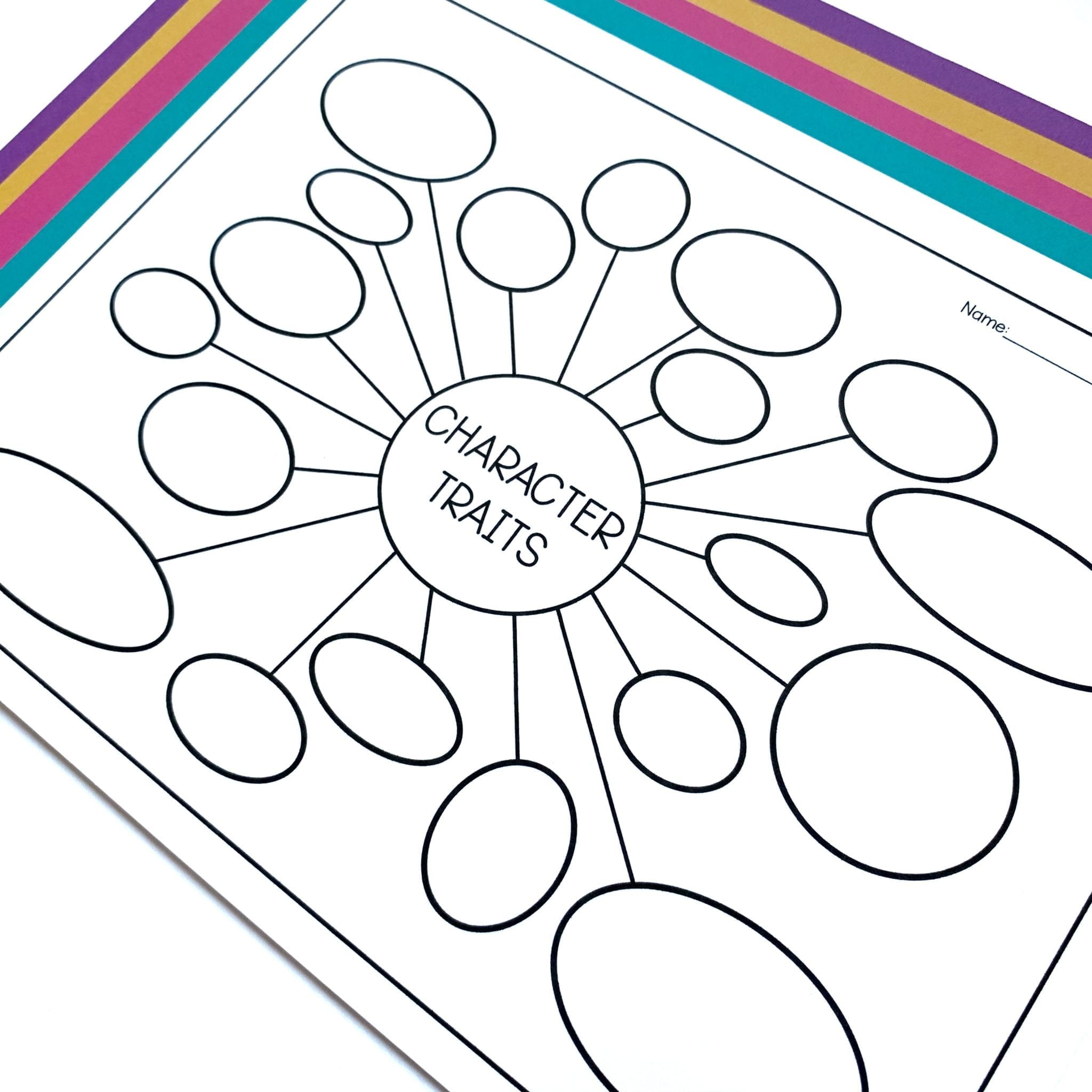
Character Maps
The character maps provide students with space to dive deeper into character creation. It forces them to think about each character’s physical description, actions, feelings, and thoughts. Without the character maps, students run the risk of creating flat characters. Taking the time to create deep and meaningful characters is an integral part of crafting a narrative.
Transition Words Bubble Map
Teaching students to incorporate different transition words into their narratives is so important. Transition words are extremely helpful for the reader to be able to follow along and keep pace with the narrative. Without them, the story might feel jumpy and disconnected. Providing the reader with transition words, helps them understand how the ideas flow together. Like the literacy devices map described above, the transition words bubble map works well as a reference tool when students begin writing their narratives.
Types of Characters Double Bubble Map
Comparing and contrasting character types will give students a stronger foundation for developing their own characters. It is important for students to know the difference between static characters and dynamic characters, not only for writing purposes, but for reading comprehension as well. Your students might be creating both types of characters, but not know the terms used to define each type. The double bubble map helps to reinforce this concept.
Types of Conflict Double Bubble Map
Delving into the different types of conflict is also something I like to do before students start writing their narratives. Conflict is a major component of all narratives, so I want to make sure students are extremely clear on the type of conflict they are presenting in their own story. We take the time to compare and contrast both conflict types and look at examples of each. In my experience, external conflicts are more popular with fictional narratives, and internal conflicts are more popular with personal narratives. That being said, both work well in either scenario.
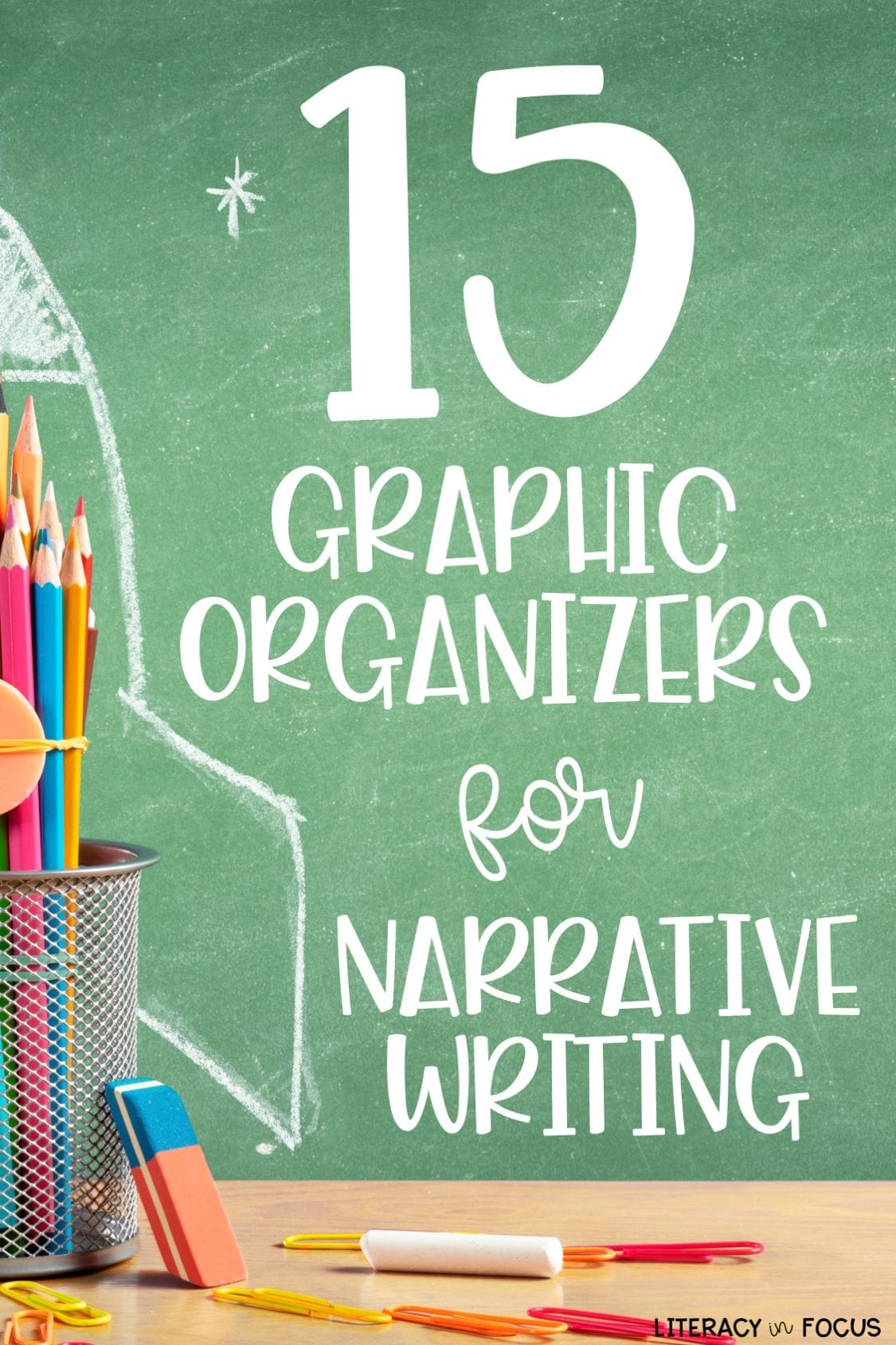
Tone vs. Mood Double Bubble Map
Possibly the most difficult literary concept for students to understand is the difference between tone and mood. I like to dedicate time for a stand-alone lesson on creating and utilizing tone and mood. Overall, my goal is for students to have a general understanding of tone and mood, so they can successfully apply both to their own stories.
Sensory Words Tree Map
I love teaching imagery! The sensory words tree map encourages imagination and gives students a chance to get creative with their writing. We start the tree map together as a class, and students finish on their own. I like to teaching students to use sensory details by describing their favorite meal. Food is something that usually appeals to all five senses. When it’s time for students to add imagery to their own stories, they just need to think back to how they described their favorite meal. They can also look back to their completed tree map for additional ideas.
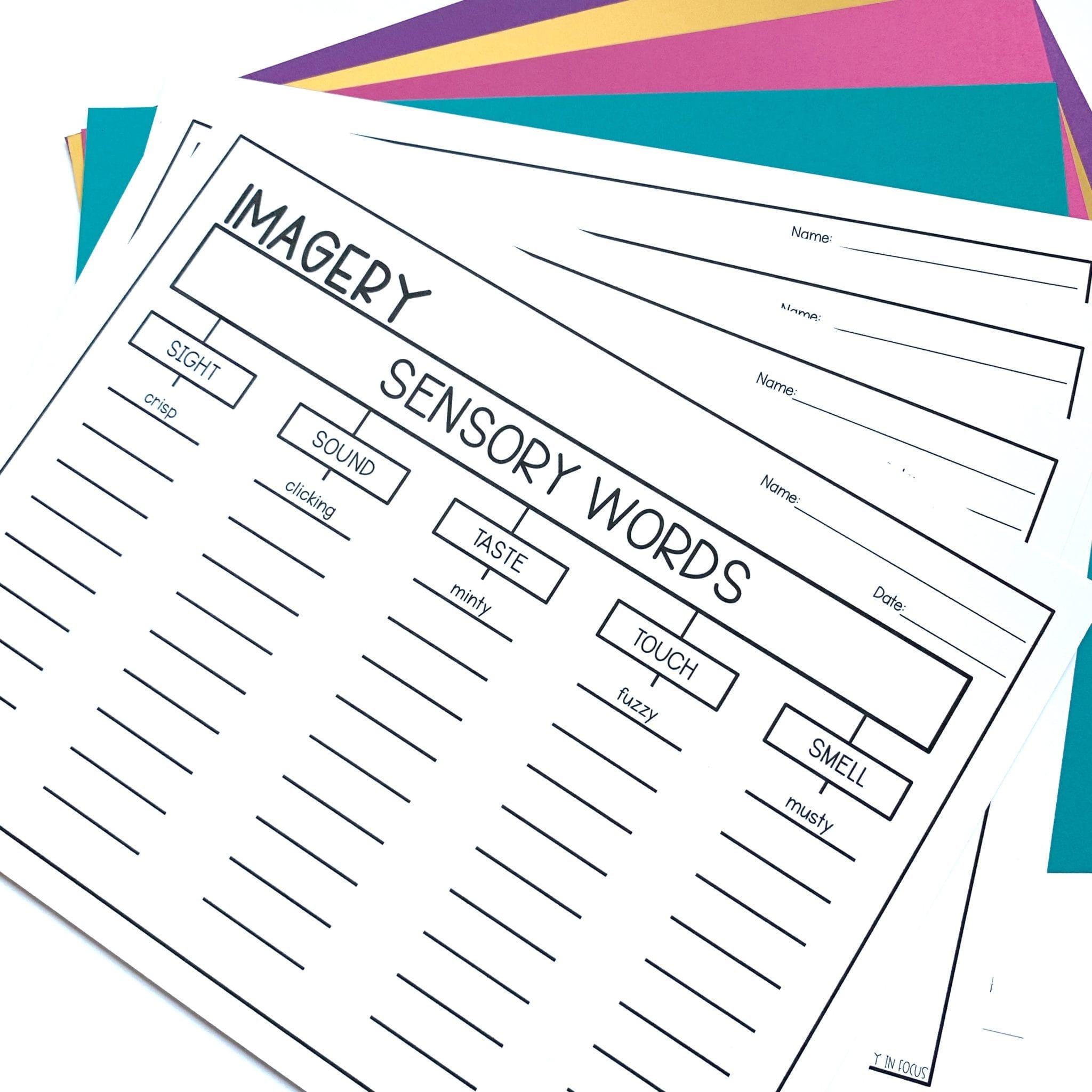
Figurative Language Tree Map
Figurative language is a concept that is weaved throughout the entire school year. I use the tree map to focus on the most common types of figurative language, and the devices that students are most likely going to add to their stories. We work together to define and add an example for each type of figurative language. The tree map works well as a quick review and as a place for students to refer back to when they are looking to add figurative language to their narrative.
Point of View Tree Map
Understanding the differences in point of view is an important part of narrative writing. If students are writing a personal narrative, they will most likely be writing in first person. On the other hand, if students are writing a fictional narrative, they will most likely be writing in third person. While understanding the differences in point of view can be tricky, most students will naturally gravitate to the correct use of point of view for their particular story.
Click here to download all fifteen Narrative Graphic Organizers from Literacy in Focus on TpT.
Narrative Flow Map
The narrative flow map presents a different way of diagraming the plot. It is essential that students work through each element of their story before they start writing. Otherwise, the narrative may contain unnecessary elements or skip over critical components that are needed for a cohesive storyline. The narrative flow map is a way for students to ensure that their story is complete and contains all necessary elements.
Plot Diagram
Most students will be familiar with a plot diagram. Like the narrative flow map, the plot diagram ensures that students add all the necessary story elements to their narratives. The plot diagram also serves as a great storytelling visual. Students can see how their story begins with the exposition, takes the reader up with the rising action, peaks at the climax, brings the reader back down with the falling action, and ties up all loose ends with the resolution.
Teaching students how to write a narrative doesn’t have to be difficult! You can pick and choose your favorite graphic organizers to use, or, if you have time, you can use all fifteen! If you are interested in downloading all fifteen graphic organizers, click here to visit Literacy in Focus on TpT, and make them yours today! All of the narrative organizers are printable and digital, making it easy for you to implement with or without technology!
“Very straightforward and easy to incorporate into my narrative writing unit. The digital copies were great for students who need technology to help with writing.” -Andrew M

